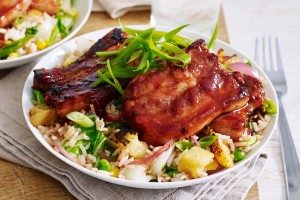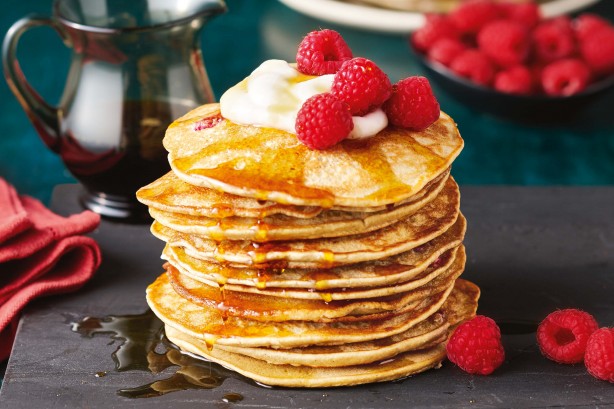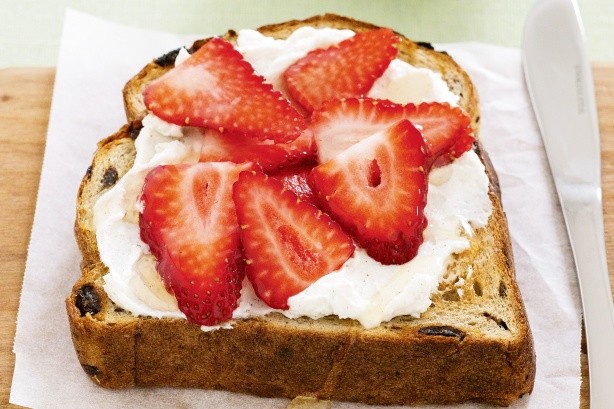The Asian essentials
Some of our favourite restaurant meals can also be made at home with help from the experts, writes Simon Wilkinson.
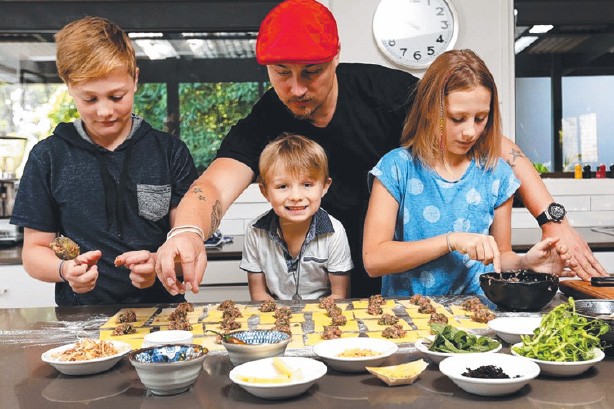
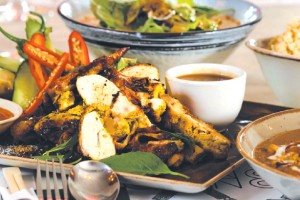
Nicole Cleary
Asian favourites can be made at home.
Most Australian home kitchens will have soy among the sauces in the pantry and a wok stowed away with the pots and pans. But if you really want to gauge how far our previously Euro-based diets have shifted in the past decade or two, take a close look in the Asian aisles of a major supermarket.
Shelves are now filled with bottles, jars, tins and packets that never would have been found before.
"You can cook a complex Asian meal out of a supermarket," says Benjamin Cooper, the kitchen force behind Melbourne's Chin Chin, one of Australia's most copied restaurants.
Andrew McConnell's restaurant empire includes highly rated Cutler & Co and Cumulus, but it is latest opening, the informal, pan-Asian eatery Supernormal, that is totally off the charts.
"If you choose the recipe carefully, Asian cooking at home can be very quick and healthy," he says.
Here are the pair's picks of the Asian essentials every home cook should master.
Pantry
Andrew suggests starting with five essentials - soy, light rice vinegar, dark Chinese vinegar, sesame oil and mirin.
"With those five condiments, the combinations are endless," he says.
Benjamin expands the selection with fish sauce, oyster sauce, Shaoxing rice wine, chilli jam or paste, sweet chilli sauce, miso, mirin and kecap manis, a thick, sweet soy.
"My wife uses that in spaghetti bolognaise," he says. "And this stuff doesn't go off. You're not opening it and throwing it away because you haven't used it again." He also keeps a supply of crisp shallots and garlic, sesame seeds, palm sugar and peanuts.
"Keep an eye on the price of limes," he advises. "When they are cheap, juice them and freeze in ice cube trays. Then you can drop one cube into a soup or dressing and add some zing."
Benjamin also recommends making a big batch of chicken stock, flavoured with ginger, spring onion, celery, white onion and dried spices such as coriander, fennel seeds and white peppercorns. With tubs of this fragrant broth in the freezer, a brilliant soup is only minutes away.
The Essentials
Benjamin Cooper Executive Chef, Chin Chin and Kong
Edamame: Drop frozen soy beans (or edamame) into boiling water and toss with salt for a quick snack. "When you've been out at family sport, the kids are exhausted and come home and they are ravenous," Benjamin explains. "Out come the edamame and they can snack on them for 20 minutes and it's going to fill them up and it's healthy."
Dumplings: Another must for the freezer. "Do your research and find a favourite packet. They take five minutes to get the steamer on and 10 minutes later you are eating dinner." Once your family gets a taste for dumplings, start wrapping your own. Buy dumpling or wonton skins from an Asian grocery. "I made dumplings with my son's kindergarten class," Benjamin says. "I taught 60 four-year-old kids how to do it. It was amazing, the greatest experience."
Wonton soup: With frozen chicken stock and dumplings in hand, this soup is a breeze. Bring the stock to a simmer, flavour with soy and Shaoxing to taste, and drop in the dumplings. Add shredded snow pea, cabbage and some egg noodles. "That's such a great family meal."
Miso soup: A 10 to 15 minute dish. "If you have bonito flakes and kombu, dashi takes five minutes. If you have dashi powder it takes two minutes," Benjamin says. "Add miso, tofu and wakame and you have an amazing miso, which is so healthy. Or put chicken or dumplings through it - or udon noodles and turn it into a ramen dish." Also, try adding steamed fish or poached eggs.
Noodle stir-fry: Be practical, Benjamin advises. "Unless you have spent gazillion dollars on a home kitchen you are never going to get the heat to cook something like a pad thai properly." Instead, opt for soft rice noodles (hor fun) or hokkeinstyle noodles. "We'll do hokkein with roast chicken (leftovers or supermarket), bok choy, ginger, garlic, sesame seeds, honey and soy. Maybe add broccoli instead of bok choy, or carrot and mushroom. That's the great thing about these noodle dishes - it's a bit like a pasta when you can add stuff. They are a great vehicle for being creative and also very quick."
Curry: Buying a good, commercial curry paste is fine, Benjamin says. "Anyone that uses a pre-made curry paste and goes to the effort of cooking it out is doing a great job." Massaman or Penang-style curries are perfect for the family because they are not as chilli hot. Take leftovers from roast beef and fold through a massaman sauce with potatoes, peanuts and chunks of pineapple. Serve with a side of brown or jasmine rice. Lamb shanks are also amazing in massaman. Braise stewing beef in a curry sauce on Sunday afternoon and use for four or five dishes.
Sushi: Great fun for the kids to roll their own - and they don't need to be perfect. Make the sushi rice sprinkled with vinegar seasoning and lay out a selection of fillings including avocado, smoked salmon or chicken. The dried nori sheets keep in the cupboard for ages.
Soba noodles: "I love the green tea soba," Benjamin says, adding that they are paired with pork belly and an apple soy at Chin Chin. At home try them with bacon or roast chicken. Dress with mirin, soy and Japanese vinegar.
Fried rice: Make a massive batch of steamed rice to go with curry one night and then turn leftovers into fried rice with corn, mushroom, bacon, roast pork or whatever. A kids' favourite.
Thai rare roast beef salad: Choose your favourite steak and marinate in fish sauce for a minute. Chargrill on barbecue or grill plate. "That's the trick," Benjamin says. "Fish sauce and beef are a match made in heaven." Serve with glass noodle (mung bean vermicelli). Throw in fresh herbs (coriander, Thai basil, garlic chive), cherry tomatoes, cucumber, green beans, cabbage, crushed peanuts. Dress with lime juice, fish sauce, sugar, chilli, coriander, a bowl of fresh chilli on the side.
Satays: Things on sticks are great for kids and for parties. Marinate two days before, make up a satay sauce and it is easy.
Andrew McConnell Chef/owner, Cutler & Co, Supernormal
White cut chicken: Andrew's method for white cut chicken, in which the legs are cut from the bird before poaching, makes it quicker and easier. Place a 1.6kg chicken and its legs in a snug-fitting pot with ginger, spring onion, coriander stems and white peppercorns. Bring to the boil and simmer for five minutes. Turn off heat and leave for 10 minutes, before putting in the fridge to cool in the broth. Divide into cold cuts to serve with sesame sauce or as part of a salad. "It's a great base recipe to prepare the day before and slice up when needed," Andrew says. Otherwise, he suggests, try liberally salting the chicken skin and cooking in a bamboo steamer.
Rice: Learn to cook rice by the absorption method. "Once you get the knack, this is a great skill to have," Andrew says. "By cooking rice this way it is fluffy and moist but not gluggy. And the next day any leftover rice hasn't stuck together. It is in the perfect state for fried rice." For long grain rice, use one cup of rice to 1 1/2 of water. Rinse rice well until water is clear. Bring to the boil, cover and let simmer for 10-12 minutes. Rest for five minutes, fluff with fork and put lid back for another five minutes.
Fish with Japanese rice: Cook rice as above and, when fluffing, mix through one of the Japanese condiments found in small spice jars at an Asian supermarket. "Pick one with shredded nori, dried bonito and dried spring onion," Andrew says. "You take the lid off and it is the most heady, aromatic, delicious rice." Serve with a piece of steamed or pan-fried fish.
Korean chicken: Take chicken marylands and slash through flesh in four places to the bone. Then slather in a marinade with a base of Sriracha or other chilli sauce, a little bit of vinegar, sugar and soy. "Do some with plenty of chilli and some without for the kids," Andrew says. Leave to marinate for a minimum of three hours. Keep it moving on the grill as it can go quite dark. "If it caramelises quickly, turn off the barbecue, put down the lid, leaving it to cook in a smoky environment, and go get another beer." Serve with a good squeeze of lime.
Cauliflower: Roast half a cauli rubbed with butter and salt for 20 minutes at 180C until it caramelises on the bottom and the outside leaves are crisp. Douse with a dressing based on white miso, rice vinegar, honey and neutral oil. Sprinkle with furitaki seasoning (nori, sesame, with lovely hit of umami).
Source
Taste.com.au — April 2016
Author
Simon Wilkinson


















